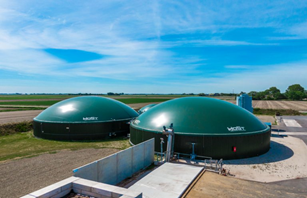

20th October 2022 (7 Topics)
Context
It has been observed that due to the unavailability of biogas in bulk, absence of infrastructure to generate & market these fuels main hurdles. So, there is a need to enhance the renewable energy sector via product transformation like CBG, LBG, hydrogen and Methanol using Biogas.
About
What is Bio-gas?
- It mainly comprises hydro-carbon which is combustible and can produce heat and energy when burnt.
- Biogas is produced through a biochemical process in which certain types of bacteria convert the biological wastes into useful bio-gas.
- Since the useful gas originates from a biological process, it has been termed as bio-gas.
- It is primarily composed of methane (50-65 per cent), carbon dioxide (30-40 per cent), hydrogen sulphide (1-2.5 per cent) and a very small fraction of moisture.

How it is produced?
- Biogas is produced when bacteria digest organic matter (biomass) in the absence of oxygen. This process is called anaerobic digestion.
- It occurs naturally anywhere from the within the digestive system to the depth of effluent ponds and can be reproduced artificially in engineered containers called digesters.
|
Method of Purification:
|
Other related products:
|
Biogas Products |
features |
|
1. Compressed Biogas (CBG)
2. Liquefied Biogas (LBG)
3. Bio-Methane
4. Hydrogen produced by Bio-gas |
|
Government Initiatives
- SATAT Scheme: CBG is the only transportation fuel from biogas for which commercialisation efforts have been made.
- The Indian government has been encouraging private businesses to set up CBG plants and provide CBG to oil marketing companies for sale as automotive and industrial fuels under the Sustainable Alternative towards Affordable Transportation (SATAT) scheme launched in 2018.

Future goals:
- Currently, LBG, hydrogen and methanol are not produced from biogas in India.
- The main reasons are the unavailability of biogas in bulk for such derivatives, the absence of infrastructure to generate and market these fuels, the deficiency of modified automobile engines as well as the lack of effective research and development push to improve process economics.
- The Indian government and Niti Aayog have outlined roadmaps to hasten our transition towards green fuels and promote LBG, hydrogen and methanol.

